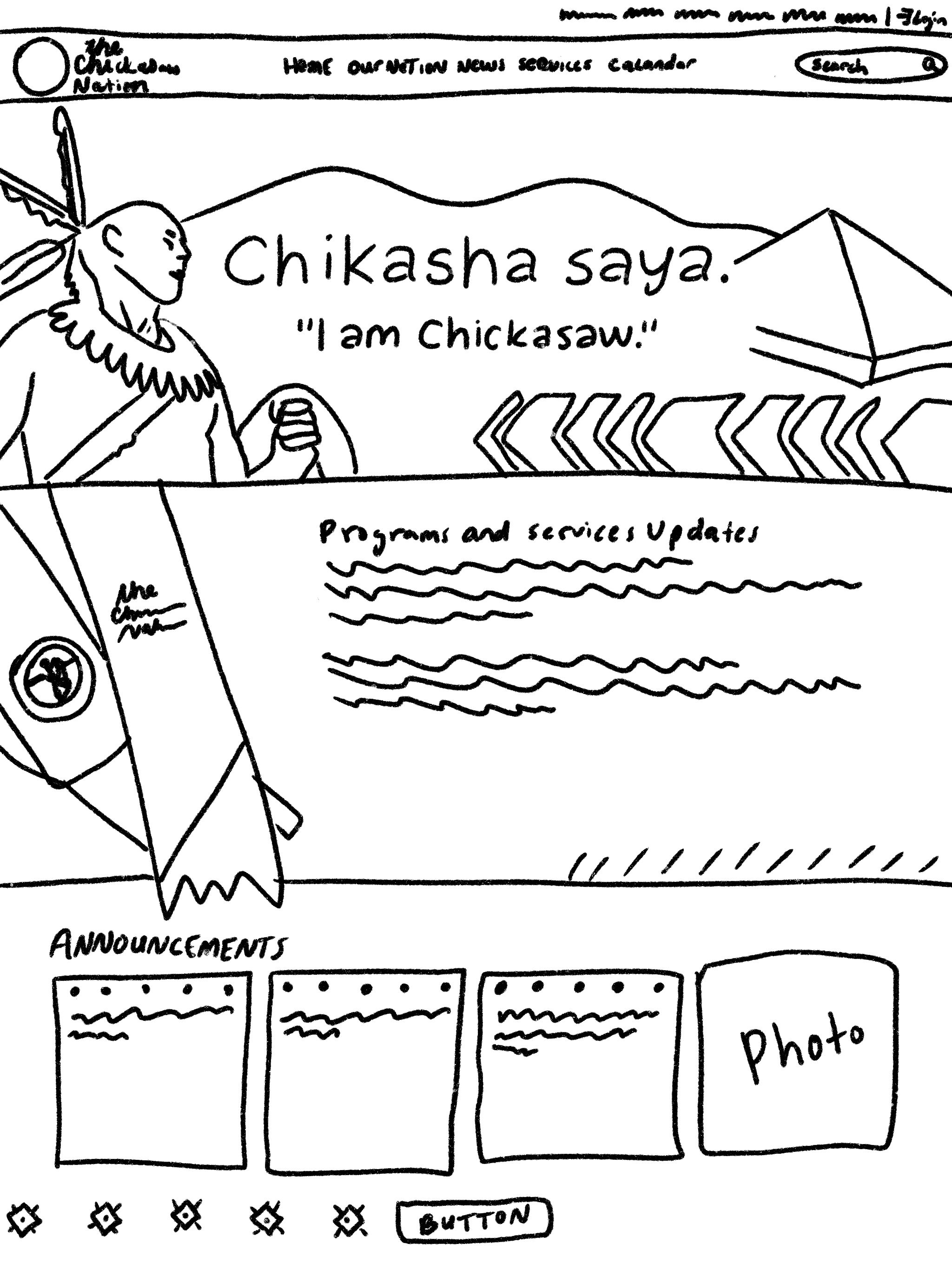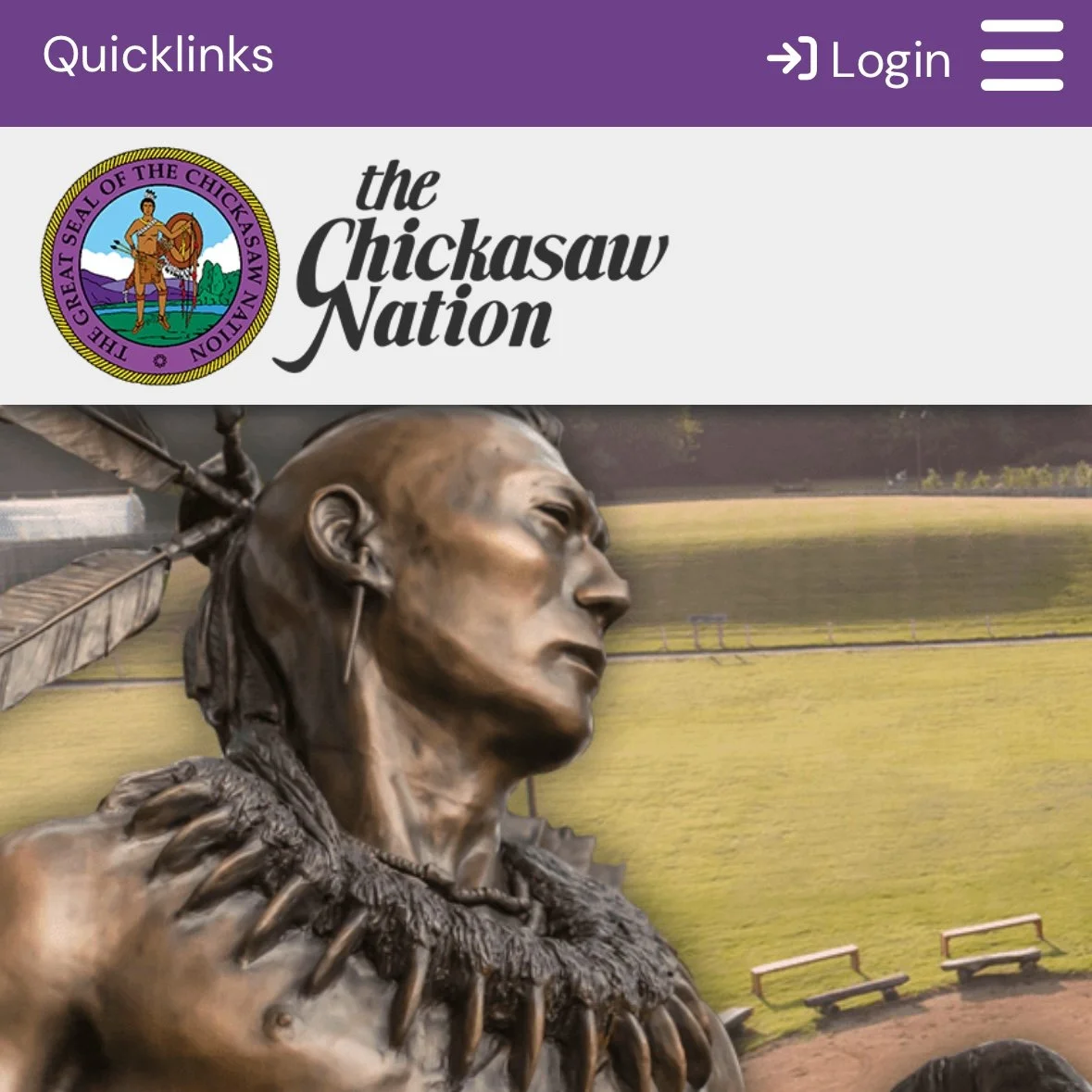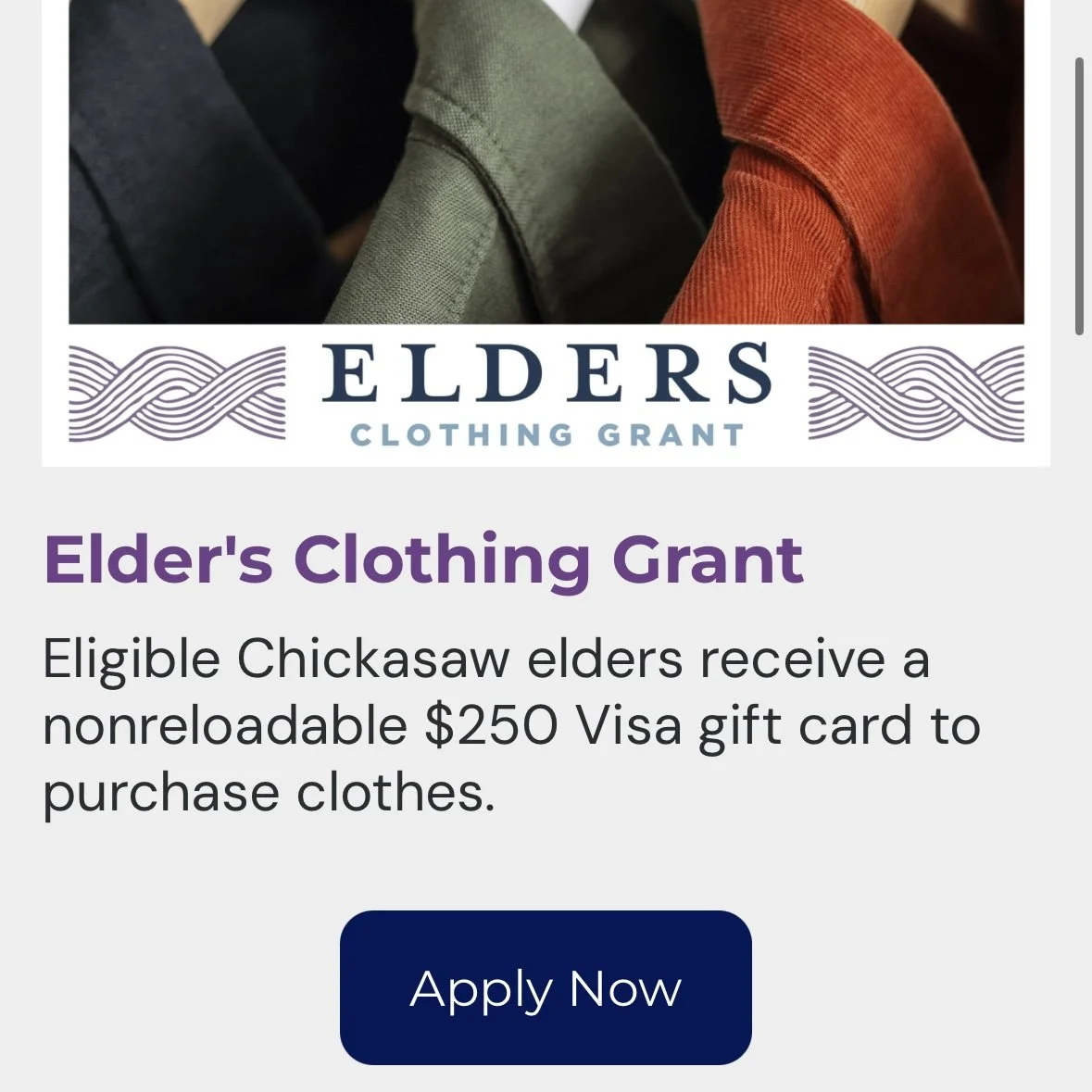
Chickasaw.net
-
Redesign of large scale government website for more than 70,000 citizens and 15,000 employees. The website provides access to resources, services, cultural content, and information about the tribe.
-
Ensuring the website serves a wide range of users with different needs—such as community members, potential visitors, and those interested in learning more about the Chickasaw people—while maintaining the tribe’s cultural identity and values.
-
Improve the overall usability of the website, enhance navigation, and ensure it meets the needs of its users through a more inclusive, accessible design.
-
As project lead, I will design a new color scheme, graphics, filters for services, and navigation throughout site.
-
6 Months to complete project.
-
Adobe XD
Adobe Illustrator
Adobe Photoshop
Font Awesome
Bootstrap
Target Users
For this project I designed and implemented the new standard of user journeys for the Chickasaw Nation UX team. I then performed user journeys for the following:
Chickasaw citizens: Looking for access to services, benefits, news, and community updates.
Visitors/Non-natives: Interested in learning about Chickasaw culture, history, and news.
Potential tribal partners or collaborators: Exploring business, educational, or cultural partnerships.
Methods
Interviews and Surveys: Collecting feedback from Chickasaw citizens, elders, and non-tribal visitors to understand their specific needs, preferences, and pain points when navigating the site.
Analytics Review: Analyzing user behavior on the current website, identifying high-exit pages, and determining common issues that users face.
Competitive Analysis: Reviewing other Native American tribal websites and similar cultural or governmental sites to understand best practices and potential improvements.
Findings
Usability Issues: The website has a lot of important information, but users often struggle to find what they need due to overwhelming content or unclear navigation.
Some content is buried too deep within the site, which prevents users from easily accessing key services and information.
Cultural Sensitivity: Users expressed the need for the website to be a reflection of Chickasaw culture, traditions, and language, both visually and in content.
Accessibility: There are potential improvements to be made in terms of accessibility, particularly for older users and those with disabilities.
Problem Definition
Based on the research, the main problems identified were:
Navigation and Content Overload: The information on the site is difficult to access due to poor navigation and overwhelming content.
Cultural Representation: The website doesn't fully reflect the culture, traditions, and language of the Chickasaw people.
Mobile Experience: The site isn't optimized for mobile, which limits its accessibility for users on smartphones and tablets.
Accessibility: The website could be improved in terms of readability and accessibility for users with visual impairments and other disabilities.
Ideation
Design Principles
Cultural Alignment: Use design elements, colors, and imagery that represent the Chickasaw Nation's culture and heritage. Include traditional motifs, patterns, and storytelling elements.
Simplified Navigation: Streamline the menu structure and categorization of content to make information easy to find.
Mobile-First Approach: Ensure the website is responsive and optimized for all screen sizes.
Accessibility: Implement accessible design practices such as larger text options, high contrast, and screen reader-friendly elements.



Solution
Wireframes & Prototypes
Wireframes: Developed wireframes for key pages like the homepage, cultural information pages, member services, and news sections.
Interactive Prototype: Created an interactive prototype using Adobe XD to test the flow of information, ease of navigation, and accessibility on various devices.
Design Updates
Navigation Overhaul: A clearer, more intuitive navigation menu with the addition of quick links to the most used services, and a well-organized dropdown for different content categories.
Cultural Design Elements: Integrated traditional patterns, icons, and Chickasaw language elements into the design to reflect cultural pride. The home page now features a more prominent showcase of cultural heritage, with stories, images, and multimedia content like music and art.
Mobile Optimization: The mobile version was given a full overhaul, with touch-friendly interactions and collapsible menus to save space.
Accessibility Features: Implemented larger, customizable text, and high-contrast options for people with visual impairments. All media, including videos and images, were properly labeled for screen readers.
Interactive Features: The design included community engagement sections where users could submit questions, share stories, and participate in cultural events. The website now hosts a cultural calendar and real-time news updates related to the Chickasaw Nation.
Testing and Iteration
User Testing: Conducted user testing sessions with a diverse group of Chickasaw citizens and general public members to ensure the new design met user needs.
A/B Testing: Experimented with different versions of the homepage to see which one resonated most with users.
Feedback Loops: Continued gathering user feedback after launch to make iterative improvements.
Outcome
Improved User Engagement: After launching the new design, there was a significant increase in page views per user and a decrease in bounce rates, especially for mobile users.
Positive Feedback: Users appreciated the clear navigation, cultural representation, and ease of access to important services and content.
Increased Access to Services: More Chickasaw citizens were able to access their member benefits easily, and non-native visitors spent more time exploring cultural content.
Reflection & Next Steps
Reflection: This project highlighted the importance of not only technical functionality but also cultural sensitivity in the design process. The key takeaway was the value of creating a user-centered design that also honors the traditions and values of the Chickasaw Nation.
Next Steps: Continuously monitor user feedback, improve accessibility, and potentially add new features such as an integrated online learning platform or virtual museum showcasing Chickasaw culture.
Conclusion
This case study demonstrates the process of designing an inclusive, accessible, and culturally aligned website for the Chickasaw Nation. The work emphasizes how good UX design can enhance both the usability and cultural expression of a website, meeting the needs of a diverse user base while also reflecting the tribe's identity and heritage.








